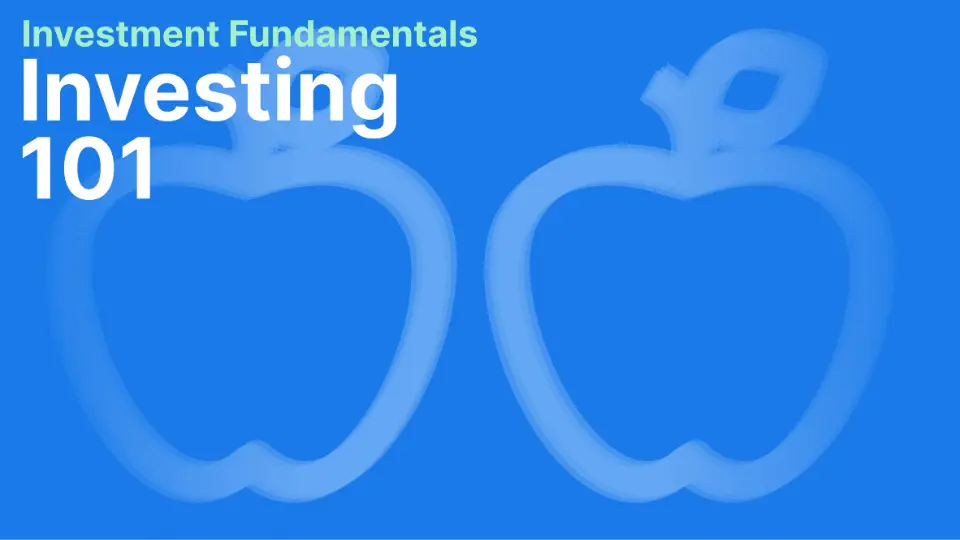Investing 101

Welcome to the world of investing! If you’ve ever dreamt of making your money work for you, you’re in the right place. This “Investment Fundamentals” guide is your first step towards understanding the ins and outs of investing and setting yourself on the path to financial success.
What is Investing? 💡
Broadly speaking, investing is the process of committing your money to a project or venture for a certain period of time with the goal of generating a return (profits that exceed the amount of the initial investment).
You can think of investing like planting a seed. You start by investing or “planting” your money into different things like stocks or property, with the hope that, over time, this money will grow and yield fruitful returns.
Whether you realise it or not, you are probably already an investor. If you have a life insurance policy or contribute to a pension fund, then your money is being invested along the lines of this guide.
Setting Financial Goals 🎯
Before you put your money into investments, consider what you want to achieve. Are you saving for retirement? Or maybe you’re planning to buy a home? Or saving for your child’s education? These are your financial goals, and they act as a compass guiding you on your investment journey, helping you align your investments with your goals.
Not setting a realistic or achievable financial target is often a common pitfall for beginner investors. Without a target, it is hard to measure the performance of your investments and assess your progress towards success. On the other hand, setting unrealistic goals and trying to achieve high returns in a short period of time can result in taking too much risk or investing in “Get-Rich-Quick” schemes (fraud).
We will dive deeper into how to set up your financial goals in Lesson 2.
Investment Types 📊
There’s no ‘one-size-fits-all’ rule in investing. It’s like an ocean with different types of fish. You have various types of investments at your disposal, like stocks (shares in a company), bonds (loans to governments/companies), mutual funds (pooled investments managed by a professional), and real estate, to name a few. Each of these investments can lead to different kinds of returns and may be suitable for different financial goals.
In Lessons 4 and 5, we will explore both Traditional and Alternative investment types.
Risk and Reward 🎲
In the world of investing, risk and reward are two sides of the same coin. Some investments may offer high returns but also come with higher risks. The greater the potential reward, the greater the risk. It’s all about finding a balance that suits you – weighing the potential rewards against the risks you’re willing to take.
In Lesson 3, we will explore in more detail the fundamental relationship between Risk and Return.
Foundations of Portfolio Construction🛠️
Creating an investment portfolio is a critical step in every investor's journey. It's more than just a collection of assets; it's a reflection of your financial goals, risk preferences, and investment horizon. The process involves not only the selection of diverse investments but also understanding how these choices work together to form a cohesive strategy.
In Lesson 7, we'll dive into the nuances of portfolio construction in greater detail. You'll learn how to strategically select and combine various asset types, such as stocks, bonds, and alternative investments, to build a portfolio that not only addresses your current financial situation but also adapts to your future goals and market changes.
The Benefit of Diversification ⚖️
When it comes to investing, and generally in life, it’s not wise to put all your eggs in one basket. By investing in different areas, you reduce the risk of loss – if one investment doesn’t work out, you’ll have others to fall back on. This strategy is known as diversification.
Conclusion 🏁
Investing is like planting the seeds for a secure financial future. By understanding the basics of investing and aligning your investments with your financial goals, you set a solid foundation for your journey ahead.
This “Investment Fundamentals” guide is your first step into the exciting world of investing. The next articles in this series will go into more detail on each topic, helping you make informed decisions about your investments. As you continue to learn and apply these ideas, you’ll be on your way to becoming a confident investor.